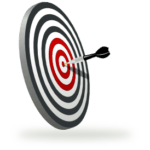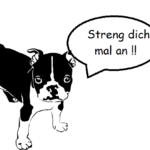exercises and solutions about the reported speech
Quiz-summary
- 1
- 2
- 3
- 4
- 5
- 6
Information
exercises and solutions about the reported speech
Results
Categories
- Not categorized 0%
- 1
- 2
- 3
- 4
- 5
- 6
- Answered
- Review
-
Question 1 of 6 1.
Question John, “ I am writing a letter“. John said he___________a letter.
Welche der nachstehenden Optionen ist die grammatikalisch richtige
Ergänzung in der indirekten Rede?Hint
Bei der indirekten Rede gilt zu beachten, dass
sobald das einleitende Verb des Berichtens in
der past steht folgende Regeln gelten:
simple present ➔ simple past
You, „I know the way“. ➔ You said (that) you knew the way.
will ➔ would
You,“I will do it“. ➔ You said (that) you would do it.
present perfect ➔ past perfect
You,“I have done it“. ➔ You said (that) you had done it.
can ➔ could
You, „I can do it“. ➔ You said (that) you could do it.
present progressive ➔ past progressive
You,“I am doing it“. ➔ You said (that) you were doing it.
would, could, might bleiben unverändert
You, „I would/could/might do it“. ➔ You said (that) you would/could/might do it.Achte darauf, dass im Englischen bei er direkten Rede einleitend ein Komma
and kein Doppelpunkt steht, die Anführungszeichen sind zweimal oben.
In der indirekten Rede folgt nach dem einleitenden Verb des Berichtens
kein Komma, auch wenn „that“ folgt. -
Question 2 of 6 2.
Question You,“I am not from Stuttgart“. You said you_________from Stuttgart.
Welche der nachstehenden Optionen ist die grammatikalisch richtige Ergänzung?
Hint
Bei der indirekten Rede gilt zu beachten, dass
sobald das einleitende Verb des Berichtens in
der past steht folgende Regeln gelten:
simple present ➔ simple past
You, „I know the way“. ➔ You said (that) you knew the way.
will ➔ would
You,“I will do it“. ➔ You said (that) you would do it.
present perfect ➔ past perfect
You,“I have done it“. ➔ You said (that) you had done it.
can ➔ could
You, „I can do it“. ➔ You said (that) you could do it.
present progressive ➔ past progressive
You,“I am doing it“. ➔ You said (that) you were doing it.
would, could, might bleiben unverändert
You, „I would/could/might do it“. ➔ You said (that) you would/could/might do it.Achte darauf, dass im Englischen bei er direkten Rede einleitend ein Komma
and kein Doppelpunkt steht, die Anführungszeichen sind zweimal oben.
In der indirekten Rede folgt nach dem einleitenden Verb des Berichtens
kein Komma, auch wenn „that“ folgt. -
Question 3 of 6 3.
Question Johnny,“I have sent a fax“. – Johnny said he________a fax.
Ergänze den Satz in der indirekten Rede mit der grammatikalisch richtigen Option:
Hint
Bei der indirekten Rede gilt zu beachten, dass
sobald das einleitende Verb des Berichtens in
der past steht folgende Regeln gelten:
simple present ➔ simple past
You, „I know the way“. ➔ You said (that) you knew the way.
will ➔ would
You,“I will do it“. ➔ You said (that) you would do it.
present perfect ➔ past perfect
You,“I have done it“. ➔ You said (that) you had done it.
can ➔ could
You, „I can do it“. ➔ You said (that) you could do it.
present progressive ➔ past progressive
You,“I am doing it“. ➔ You said (that) you were doing it.
would, could, might bleiben unverändert
You, „I would/could/might do it“. ➔ You said (that) you would/could/might do it.Achte darauf, dass im Englischen bei er direkten Rede einleitend ein Komma
and kein Doppelpunkt steht, die Anführungszeichen sind zweimal oben.
In der indirekten Rede folgt nach dem einleitenden Verb des Berichtens
kein Komma, auch wenn „that“ folgt. -
Question 4 of 6 4.
Question Susan,“I can do it“. Susan said she_________do it.
Ergänze den Satz in der indirekten Rede mit der grammatikalisch richtigen Option:
Hint
Bei der indirekten Rede gilt zu beachten, dass
sobald das einleitende Verb des Berichtens in
der past steht folgende Regeln gelten:
simple present ➔ simple past
You, „I know the way“. ➔ You said (that) you knew the way.
will ➔ would
You,“I will do it“. ➔ You said (that) you would do it.
present perfect ➔ past perfect
You,“I have done it“. ➔ You said (that) you had done it.
can ➔ could
You, „I can do it“. ➔ You said (that) you could do it.
present progressive ➔ past progressive
You,“I am doing it“. ➔ You said (that) you were doing it.
would, could, might bleiben unverändert
You, „I would/could/might do it“. ➔ You said (that) you would/could/might do it.Achte darauf, dass im Englischen bei er direkten Rede einleitend ein Komma
and kein Doppelpunkt steht, die Anführungszeichen sind zweimal oben.
In der indirekten Rede folgt nach dem einleitenden Verb des Berichtens
kein Komma, auch wenn „that“ folgt. -
Question 5 of 6 5.
Question Match the elements to form meaningful pairs:
Sort elements
- He said he would do it.
- He said he could do it.
- He said he might do it.
- He said he had done it.
- He said he was doing it.
- He said he did it.
-
"I will do it."
-
"I can do it."
-
"I might do it."
-
"I have done it."
-
"I am doing it."
-
"I do it."
Hint
Bei der indirekten Rede gilt zu beachten, dass
sobald das einleitende Verb des Berichtens in
der past steht folgende Regeln gelten:
simple present ➔ simple past
You, „I know the way“. ➔ You said (that) you knew the way.
will ➔ would
You,“I will do it“. ➔ You said (that) you would do it.
present perfect ➔ past perfect
You,“I have done it“. ➔ You said (that) you had done it.
can ➔ could
You, „I can do it“. ➔ You said (that) you could do it.
present progressive ➔ past progressive
You,“I am doing it“. ➔ You said (that) you were doing it.
would, could, might bleiben unverändert
You, „I would/could/might do it“. ➔ You said (that) you would/could/might do it.Achte darauf, dass im Englischen bei er direkten Rede einleitend ein Komma
and kein Doppelpunkt steht, die Anführungszeichen sind zweimal oben.
In der indirekten Rede folgt nach dem einleitenden Verb des Berichtens
kein Komma, auch wenn „that“ folgt. -
Question 6 of 6 6.
Question Put the folllowing sentences into the reported speech like in the example:
John,“I will clean up the room“. = John said he would clean up the room.
- "I can't find my keys." ➔ He said he (couldn't find) his keys. "I hate maths." ➔ You said you (hated) maths. "I might do it." ➔ She said she (might do) it. "I can't do it." ➔ You said you (couldn't do, could not do) it. "We will take the bags." ➔ They said they (would take) the bags. "We've just bought a house." ➔ They said they (had) just (bought) a house. "We're working hard." ➔ They said they (were working) hard.
Hint
Bei der indirekten Rede gilt zu beachten, dass
sobald das einleitende Verb des Berichtens in
der past steht folgende Regeln gelten:
simple present ➔ simple past
You, „I know the way“. ➔ You said (that) you knew the way.
will ➔ would
You,“I will do it“. ➔ You said (that) you would do it.
present perfect ➔ past perfect
You,“I have done it“. ➔ You said (that) you had done it.
can ➔ could
You, „I can do it“. ➔ You said (that) you could do it.
present progressive ➔ past progressive
You,“I am doing it“. ➔ You said (that) you were doing it.
would, could, might bleiben unverändert
You, „I would/could/might do it“. ➔ You said (that) you would/could/might do it.Achte darauf, dass im Englischen bei er direkten Rede einleitend ein Komma
and kein Doppelpunkt steht, die Anführungszeichen sind zweimal oben.
In der indirekten Rede folgt nach dem einleitenden Verb des Berichtens
kein Komma, auch wenn „that“ folgt.



